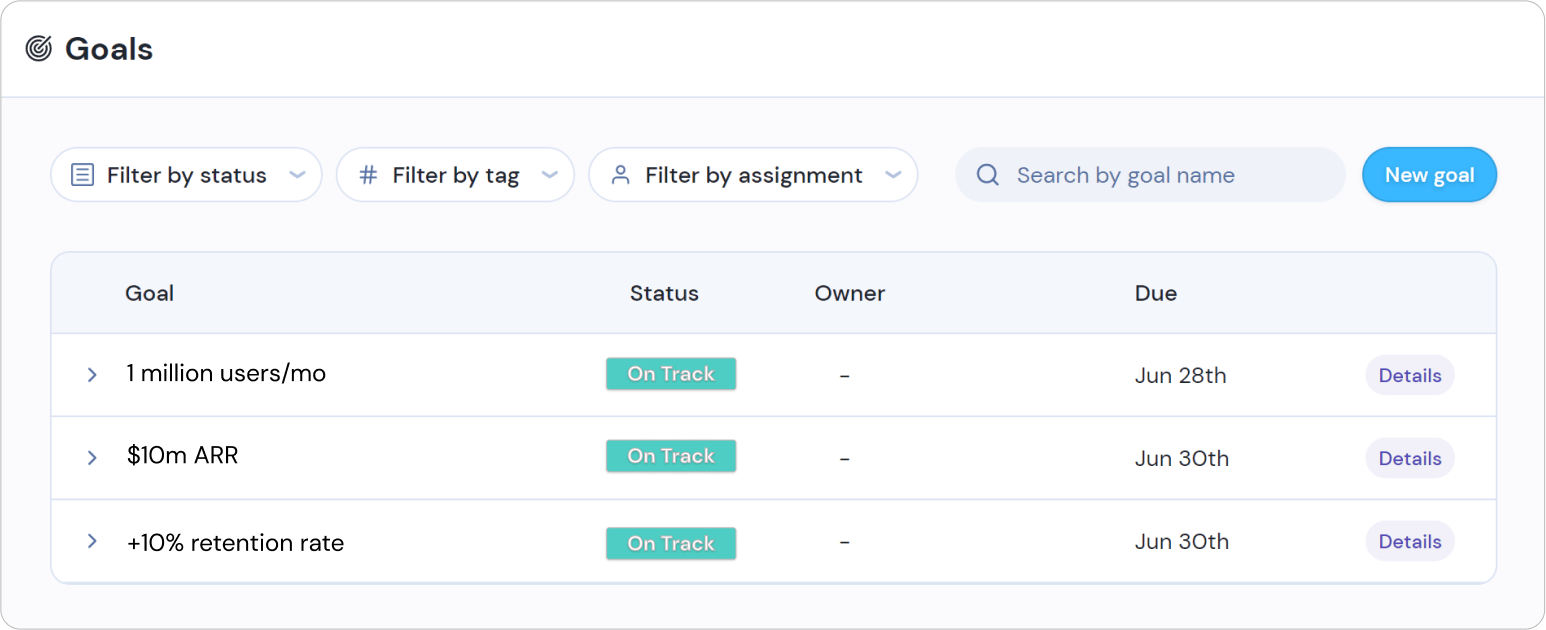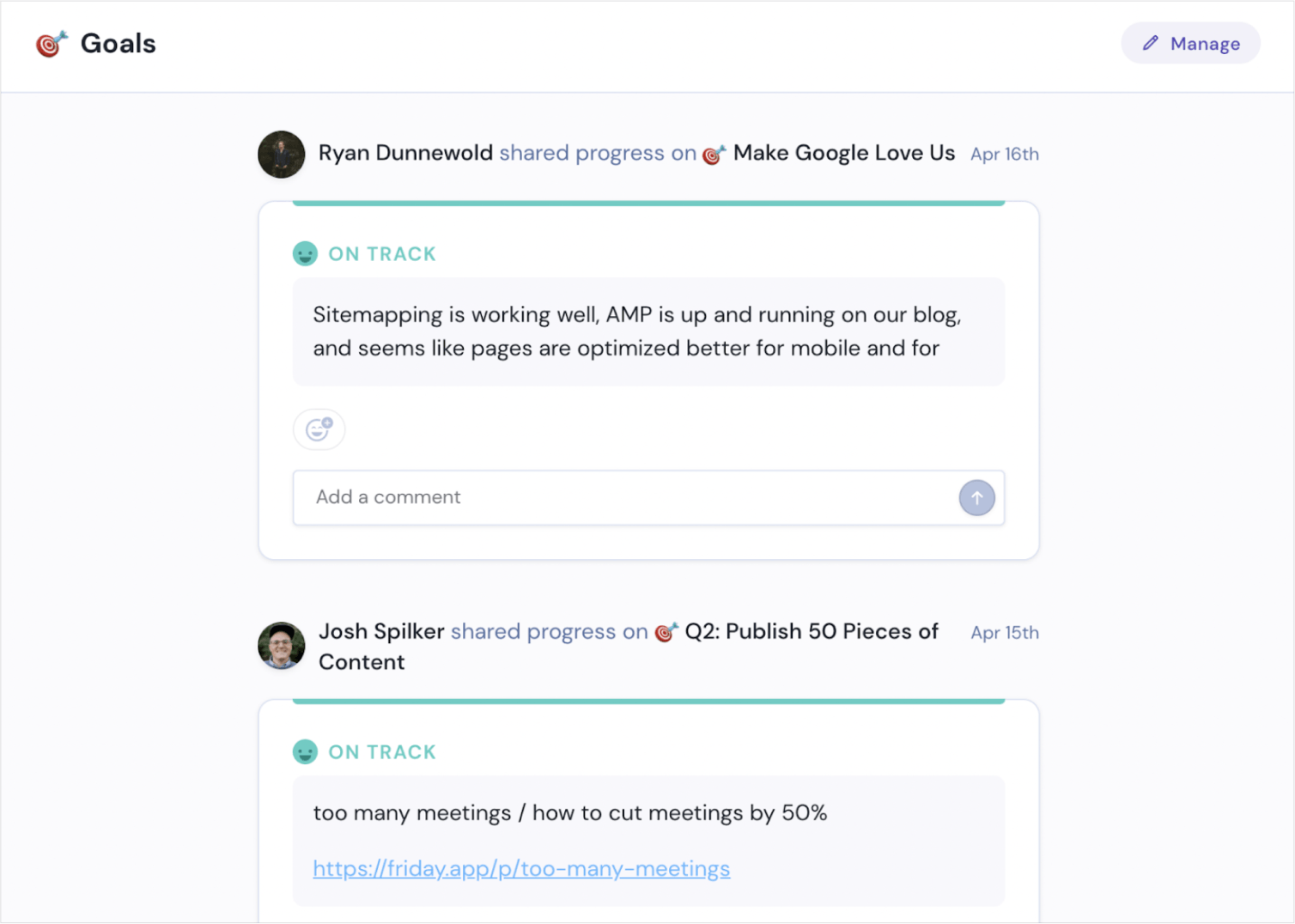Chapter 14: How to stay aligned

Similar to accountability and trust, alignment is a vague word that means different things to different people. When I think about alignment, I think about a sports team. The coach is responsible for coordinating the entire group and achieving a high level of performance, but each player has a specific position to play. Players are divided into smaller groups (i.e., offense vs. defense), but the entire team has a mission – to win the game.
The best companies operate like a high-performing team, but what does this look like when working from anywhere? In the rest of this chapter, we’re going to talk about roles and goals, the building blocks for staying aligned.
Roles
Every person needs to understand what position they need to play on the field. Some people are responsible for scoring. Others are responsible for preventing goals from being scored.
When hiring, most organizations will create a job posting and highlight a list of responsibilities to help candidates understand what is required of them. While this is helpful during the hiring process, the job description becomes stale and outdated quickly. To make matters worse, this information is not shared with existing employees, so they have no idea why someone is working at the company.
"Who is responsible for _______?"
Who should I talk to to learn about _________"
"What would you say you do here?"
The lack of transparency in roles and responsibilities can cause unintended consequences. A new hire is trying to make an impact, but they don’t know if they overstepped their bounds. I can’t tell you how many times I’ve unintentionally made this mistake in the past.
How to fix?
I’ve found the following activities can make a huge difference:
- Give people clear areas of ownership and don’t overcomplicate it. Often you hire people to solve one primary pain point. Make it obvious what the most important area of ownership is.
- Make key responsibilities visible to all – Ideally, a new employee should be able to visit a coworker’s profile and see what they are responsible for. They shouldn’t need to ask around to learn this.
Goals
Now, let’s talk about goals. In almost 10 years of working remotely (for a variety of companies, both big and small), I’ve never seen a single company do this well. It’s not a lack of effort. It’s because it’s tricky to align an entire group of people towards a common objective.
How goal-setting works now
As a leadership team, you will meet up toward the end of the year, spend a day or two in meetings, lightning will strike, and the perfect goals will float down from the sky. Then, you will encourage team leaders to do the same with their staff, making sure that team goals “ladder-up” to the company objectives.
At the end of this exercise, you are feeling pretty great. You can see all the goals and success metrics in a spreadsheet. You are a genius.
Two weeks later, reality hits. Things change. You need to revisit your assumptions and adapt the plan. The beautiful spreadsheet becomes stale. In a meeting, you ask a team leader to share progress on an OKR and they stare at you with a look of terror.
Problems
After watching this bad movie over and over, I’d argue that there’s three major issues with this approach:
- Out of sight, out of mind – when important goals are buried in a document, it’s easy to forget about them. Out of sight, out of mind.
- Not transparent & accessible to all – The goal doc is crafted for your benefit, not the average employee. This information is rarely packaged in a way that resonates with the front line. As a result, they don’t care about it.
- Doesn’t reflect the current state – You oftentimes need to beg your team to update the current status. It’s easy to forget, which means the information becomes stale. This is a recipe for the dreaded status update meeting.
What to do?
While there is no silver bullet that will work for every company, here are a few principles to follow:
1. Goals cannot live in a spreadsheet
To start, you need to get goals and initiatives out of hidden spreadsheets that no looks at. To use an analogy from the office environment, should this information be stashed away in a file cabinet or displayed on a bulletin board?
If you store goals in a spreadsheet, you are asking your team to forget about them. This information needs to be in an easy-to-access place and visible at least once a week. You should constantly refer to your goals in meetings, but you need to make sure you’ve stored it in a way that can easily be accessed by anyone, at any time.
2. Goals need to be centralized in one place
A growing number of project management tools (Asana, Jira, etc.) offer goals functionality in their products. Resist the urge to use one of these tools to document and report on goals. As your company grows, each team will want to use its own project management tool. This fragmentation creates a lack of visibility and makes it impossible to centralize goals in one place for all to see. As a result, you will need to hold meetings to understand what’s going on.
3. Each goal needs to have a directly responsible individual
Next up, every goal needs to have an owner who is responsible for sharing progress. This is known as the directly responsible individual (DRI). Without an owner, there is no accountability.
4. Goals must be integrated into everyday workflows
It’s not enough to stash your goals in one place. You need to be able to look and see exactly what is going on at a given moment in time. Every DRI must share progress on a regular basis. The most obvious way to collect this information is to hold a meeting, but, as you may recall from previous chapters, sharing information and status updates is best done asynchronously.
What we do at Friday
At Friday, we use our goals product to centralize and report on key initiatives.

We already use the product for daily standups, weekly updates, and more, so directly responsible individuals can easily report on goal progress once a week after sharing an update.
As people share progress, this information is pushed into a goals newsfeed and a dedicated Slack channel. This helps create a feeling of alignment and encourages everyone to keep their goals up-to-date.

I can also see my most important initiatives as I plan my day, which constantly reminds me of the bigger picture and helps me align daily tasks to key initiatives.
If you don’t want to use Friday, there are plenty of other goal-tracking tools with robust functionality. The only issue you will run into is the yet another tool problem. You will need to create your own habits and workflows to encourage your team to share progress.
Aisha’s perspective
“Every month, everyone partakes in a monthly kickoff meeting, where we go over what we achieved the month prior and what we want to do for the upcoming month. We break down what we want Friday to accomplish, depending on different subjects, like the marketing side, or the product itself. We all set individual goals that we want to fulfill for the month.
We then see how these separate goals can come together so the team can reach an overarching goal of making Friday a product beneficial for companies.
The other places where I’ve worked didn’t have these clear-cut goals that we addressed and had to achieve. There were tasks to be done, but nothing large enough to work toward every month.
I like the goal-setting feature we use because it helps me stay on track while also seeing the big picture. I know exactly where my progress is going and why I’m striving to reach the goal.”
In conclusion
Staying aligned is not easy. If you focus on roles and goals, it will help significantly. It’s okay to have meetings to talk it out, just make sure to write it all down and share it with others when you’re done.
Want to keep reading? In the next chapter we talk about how to hold company meetups.


